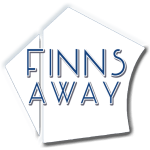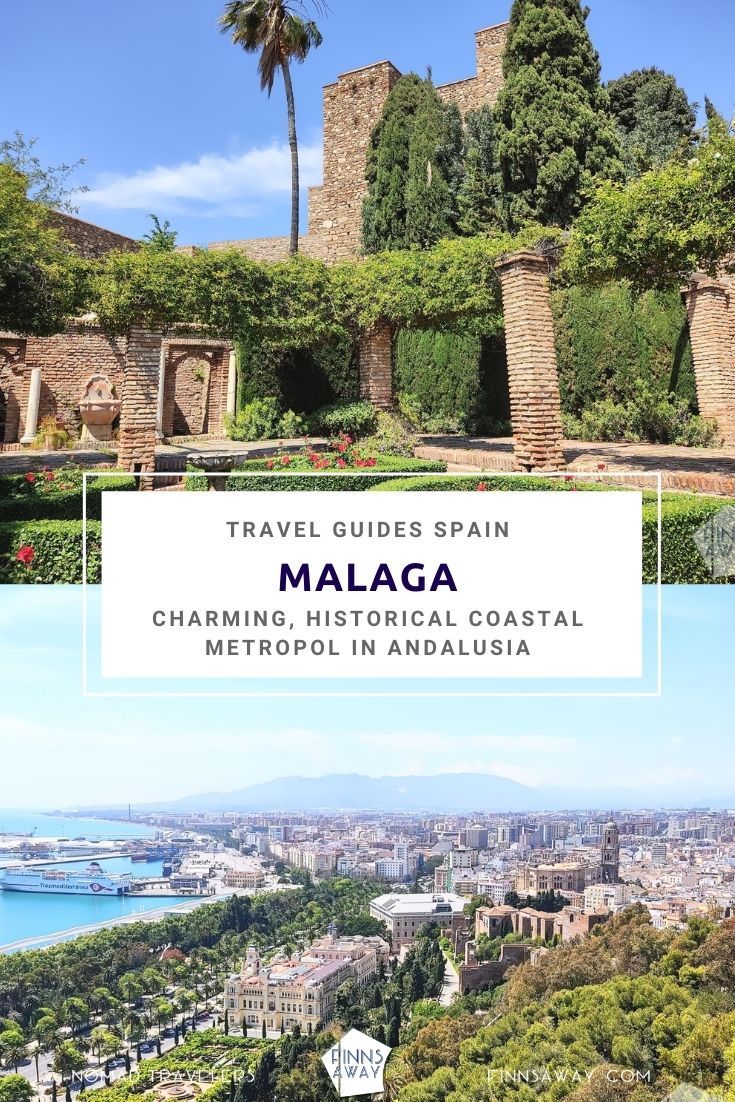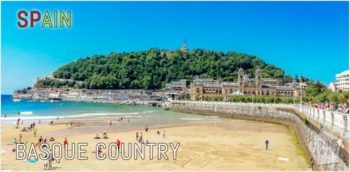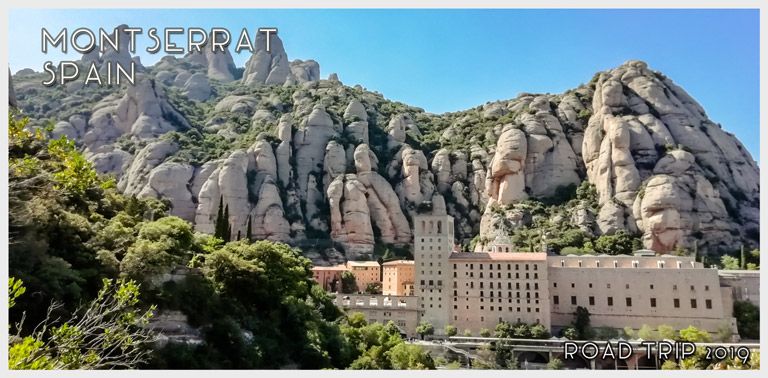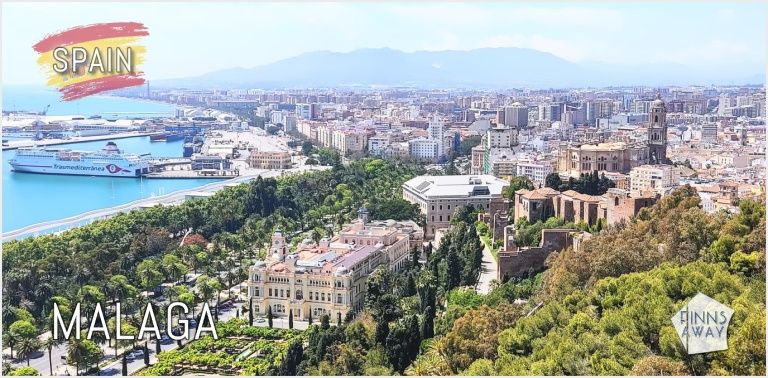
Charming Malaga in Andalusia, Spain
We just recently had a couple of days of mini-vacation in Malaga, a coastal city and the capital of Malaga province in Andalusia, southern Spain. After all the months with almost no traveling at all, it was so joyful to wander around the city, along the beautiful walking streets of the old town, the livery waterfront promenades and the amazing hilltop fortifications. Although we have been able to enjoy beautiful environments even during all the travel restrictions, living here in Andalusia and previously in France, there hasn’t been much holiday feel in the air lately, you know. This weekend getaway felt like a short vacation however, even if we had to wear masks all the time and take care of distances of course.
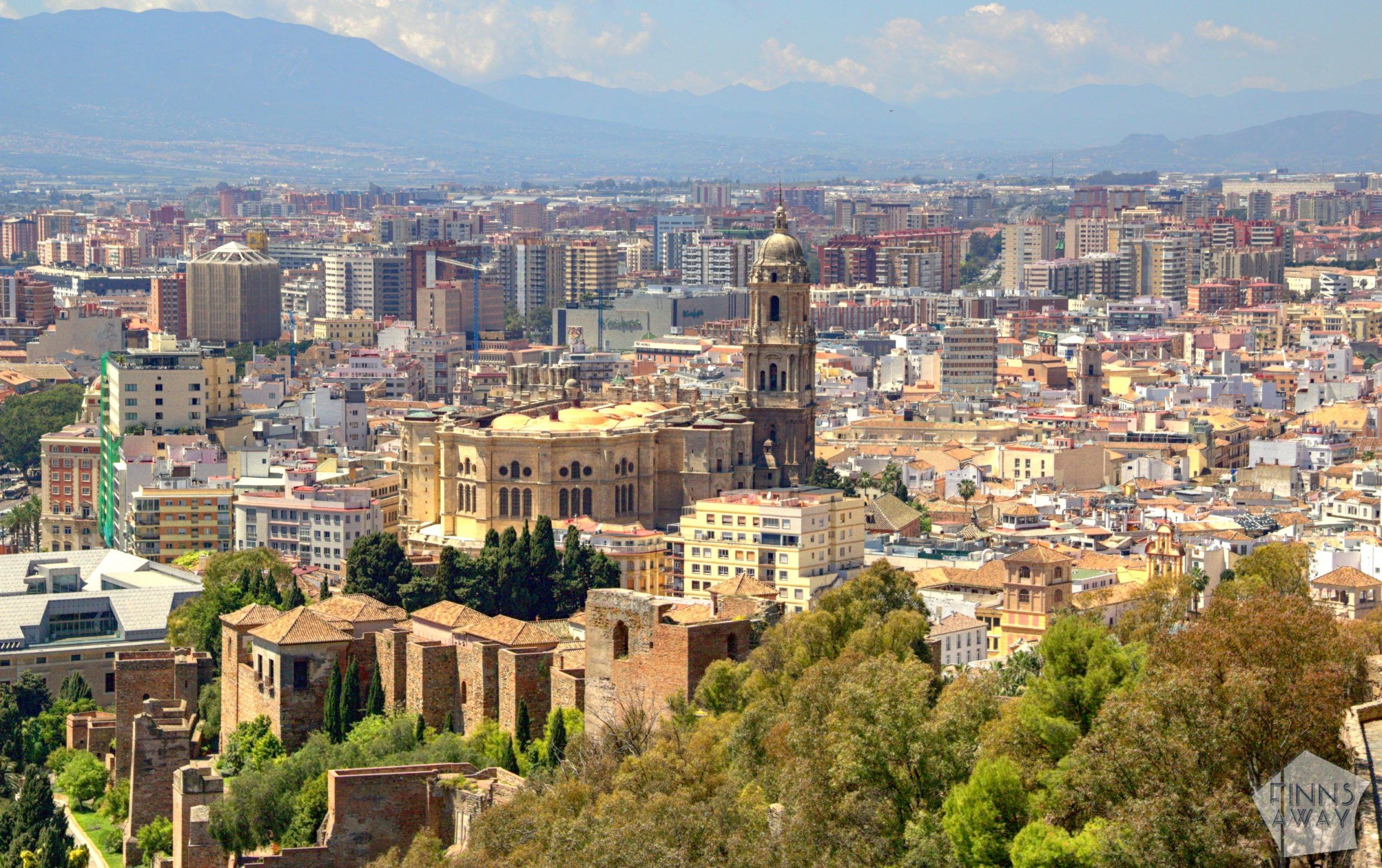
Table of Contents
Malaga in a nutshell
Malaga is located in southern Spain, in Andalusia, in the province of Malaga, right next to the popular Costa del Sol coast. Malaga is often considered as a beach holiday destination, like the series of small beach towns right next to it, but actually it’s the sixth largest city in Spain, with a population of almost 580,000, and a city full of history and culture. The city was founded by the Phoenicians as early as the 8th century BC, and its long history is magnificently reflected in the cityscape, through a Roman theater to Arab fortresses and the stunning Spanish Baroque-style buildings in the old center.
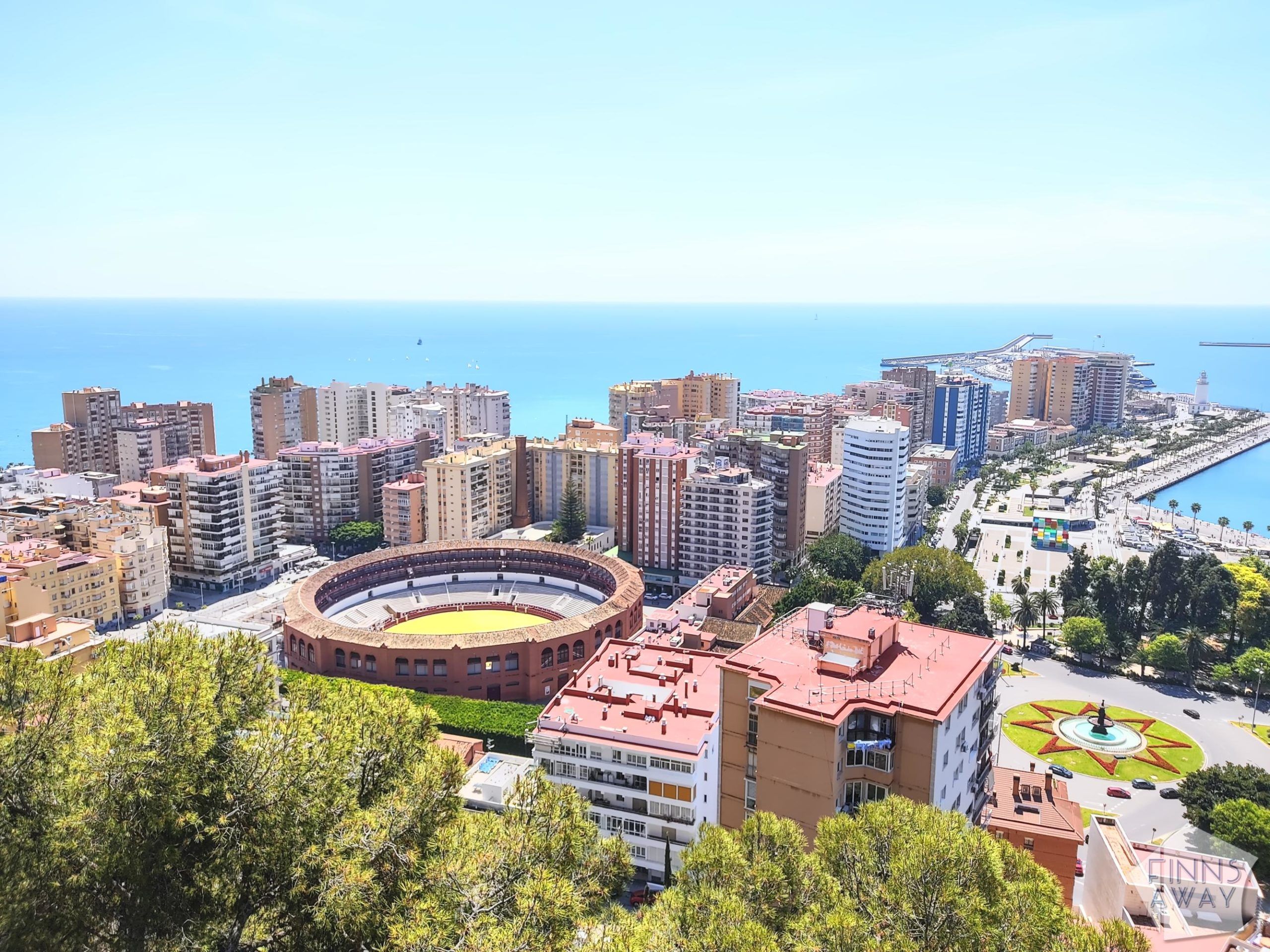
Malaga is a coastal city by the Mediterranean, and surrounded with rolling green hills and mountains. If the location is beautiful, so is the city itself. The city center is busy, but there are also large, oasis-like parks, especially the magnificent, tropical Parque de Málaga, and fine sandy beaches can be found within walking distance of the city center. Malaga has more than 300 sunny days a year, so the weather is mostly great even through the winter months. Malaga is a loud and lively city where, in addition to the locals, both Spanish and international tourists (normally) thrive. The most popular area is the old town, but there are a lot of other interesting neighborhoods to explore, such as Soho that has transformed from a former harbor block into a trendy and bohemian neighborhood, or San Andres with a lively beachfront promenade.
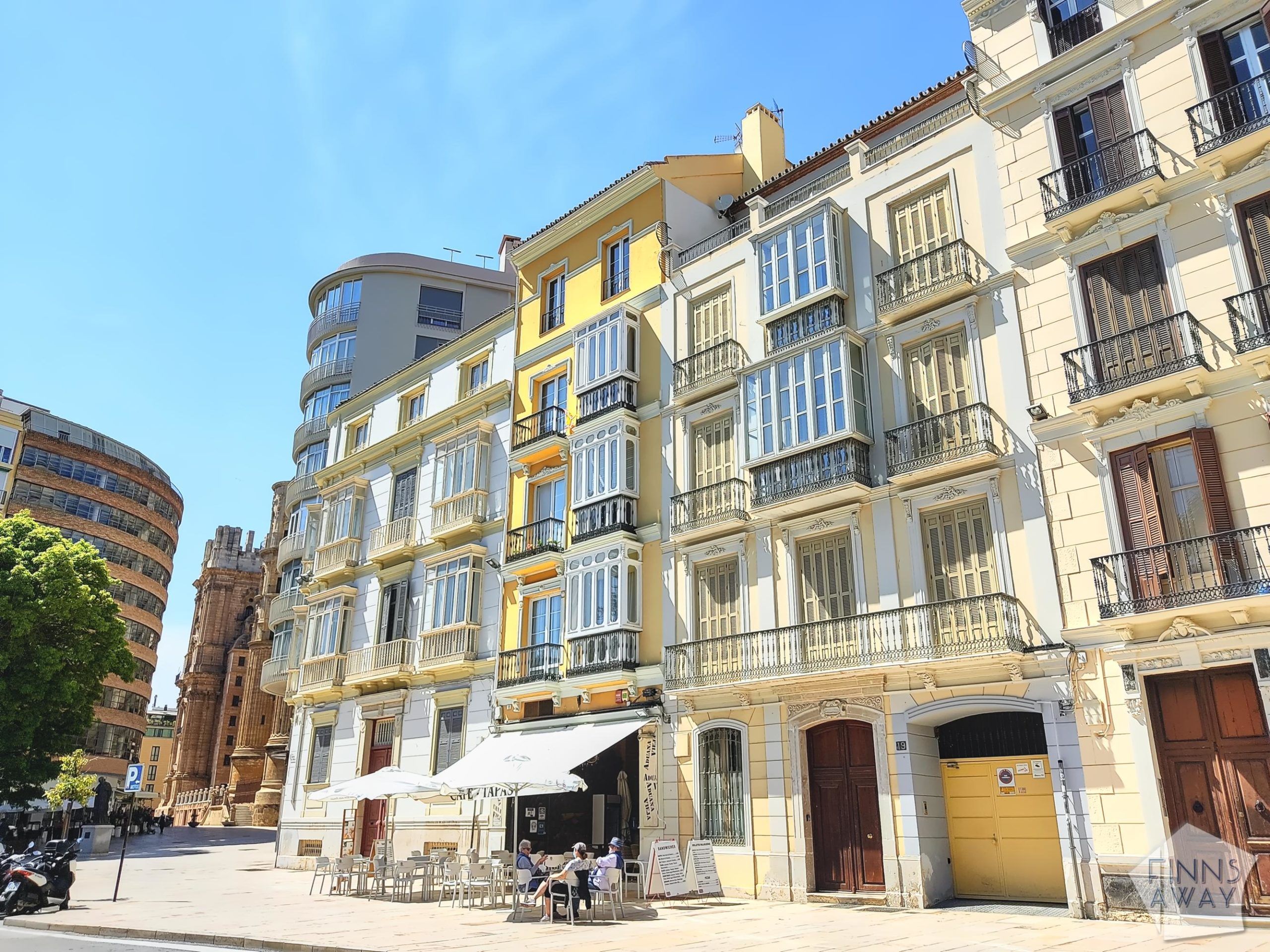
Malaga has also recently gained reputation as a city of culture, with several major museums, including the only Pompidou art museum outside France. Malaga is also known as a city of wine and food – wine enthusiasts can visit a wine museum and cellars that showcase the strong and sweet Malaga wine, specialty of the region, and gastronomy lovers can choose to enjoy a variety of international delicacies or the region’s traditional tapas culture and seafood.
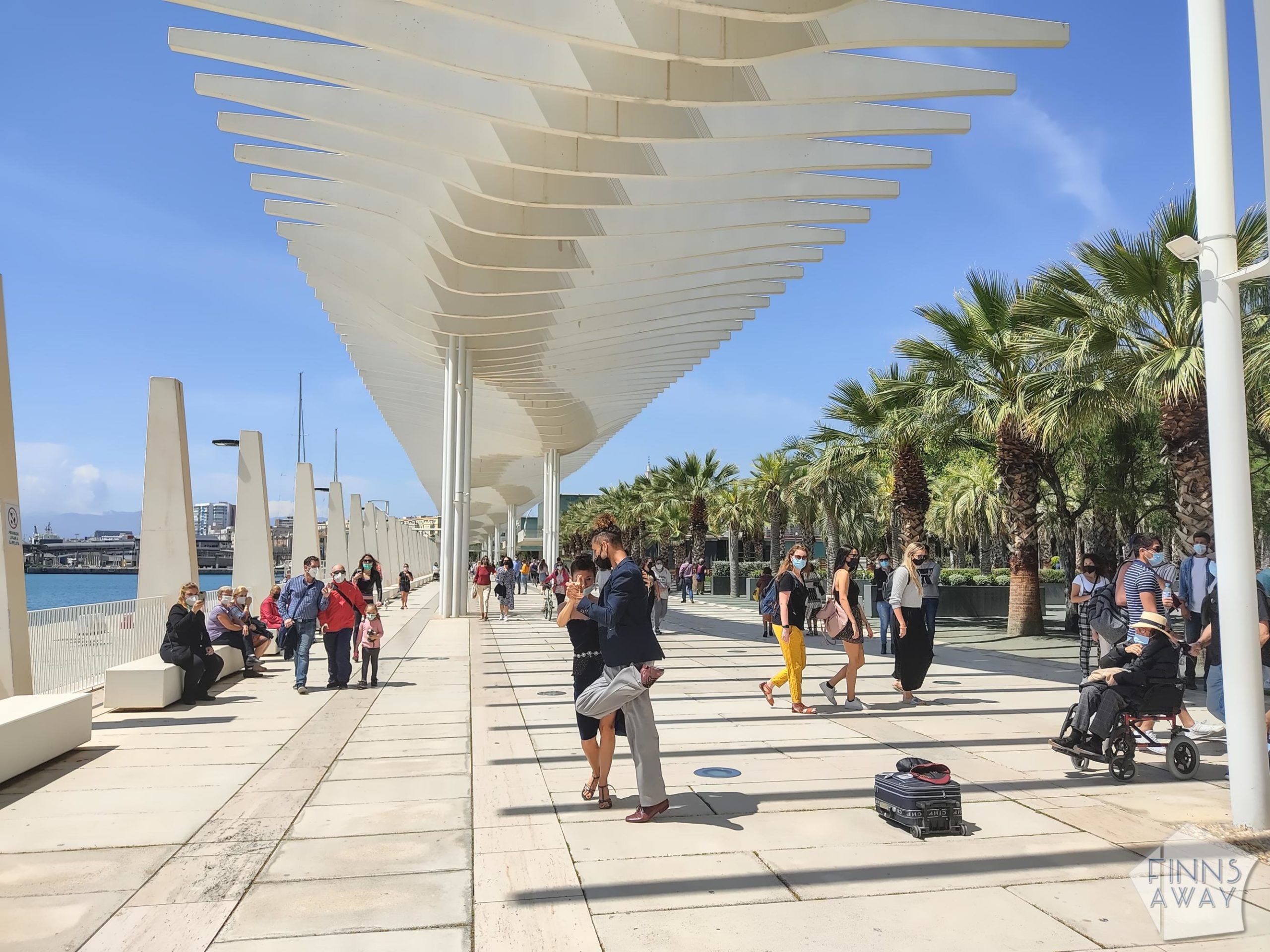
Malaga Old Town, Centro Historico
Malaga is a fairly widespread city with enough to explore for several days, but the so-called main attractions can be found in a fairly small area of the city center. Malaga’s old town, Centro Historico, with its winding promenades and historic buildings, is an experience worth spending several hours on. The alleys of Centro Historico are lined with beautiful buildings and squares, with numerous cafés and restaurants with attractive terraces. The main street of the area, Calle Molina Lario, is wide and neat, and has some of the most stunning Baroque buildings. Howver, the smaller side streets and alleys are even more luring and somehow more genuine, romantic even.
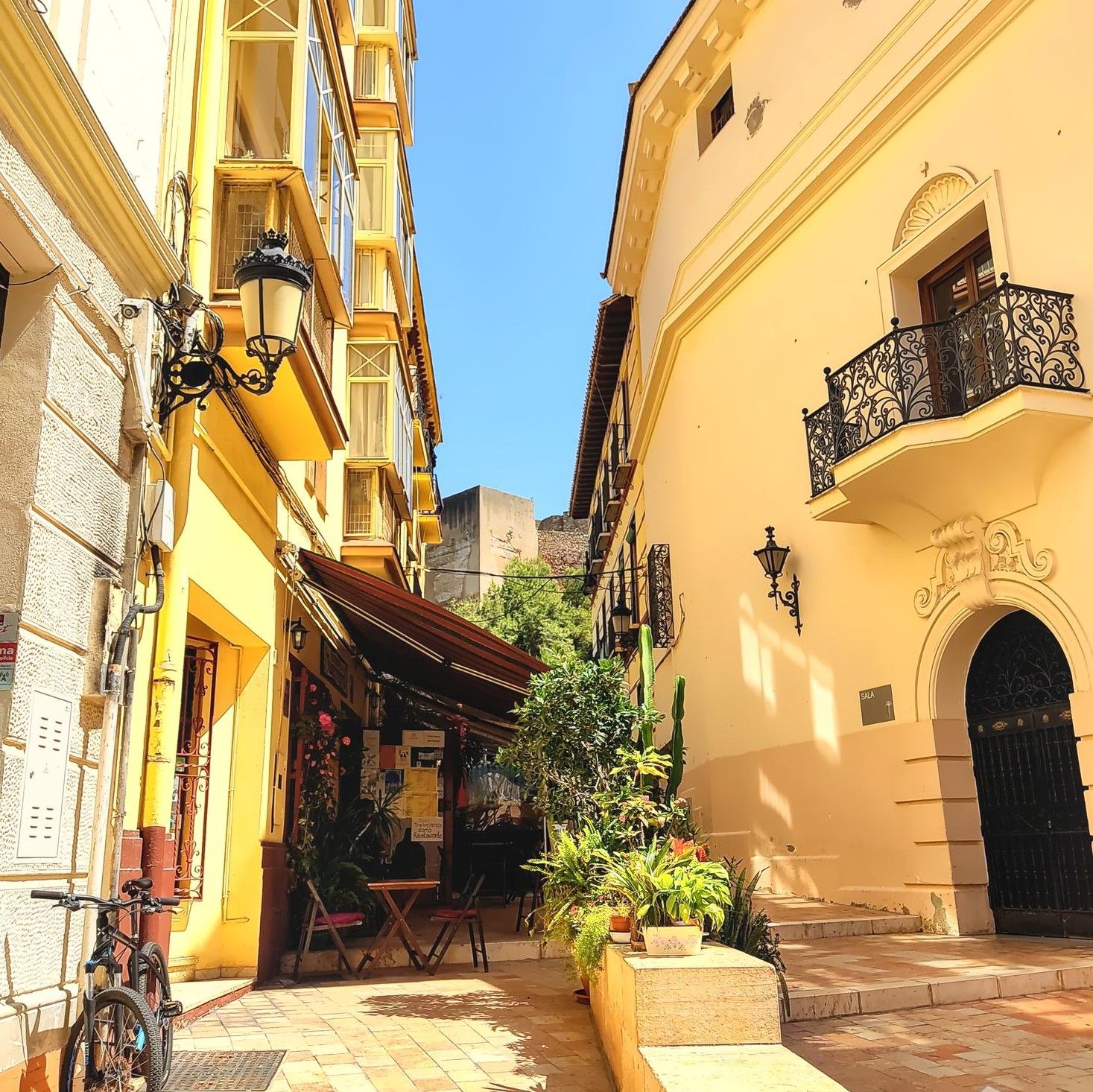
The most famous building in the Centro Historico is the breathtakingly magnificent Malaga Cathedral, officially called the Nuestra Señora de la Encarnación (Our Lady of Incarnation). Construction of this giant Roman Catholic church that represents the Renaissance and Baroque styles began, in 1528, but the building was not completed until more than 250 years later. Malaga Cathedral is truly impressive, and its size is accentuated by the 82-meter-high tower and the rugged Baroque facade. The magnificence of the building is repeated in its interior, which also houses the Cathedral Museum.
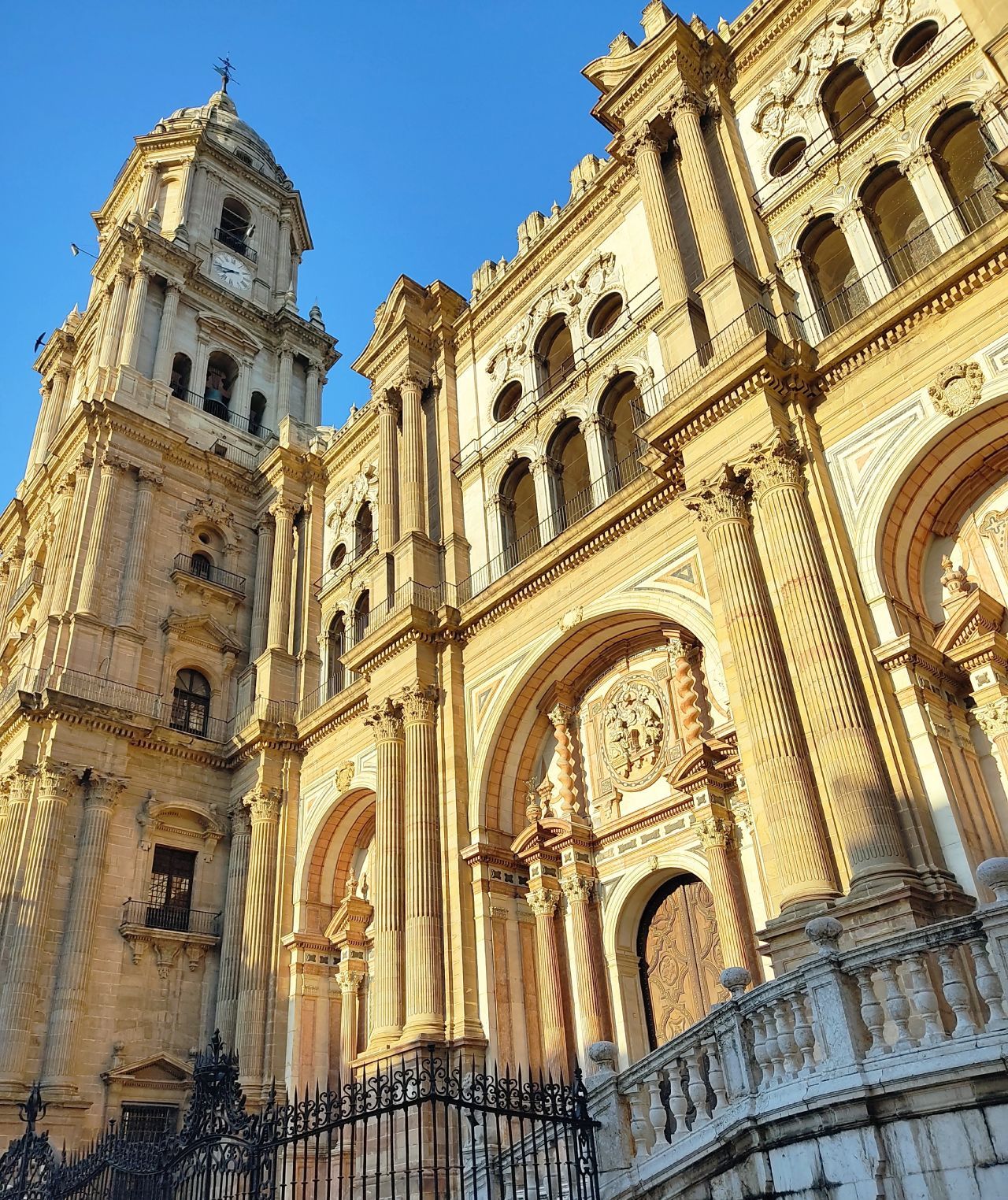
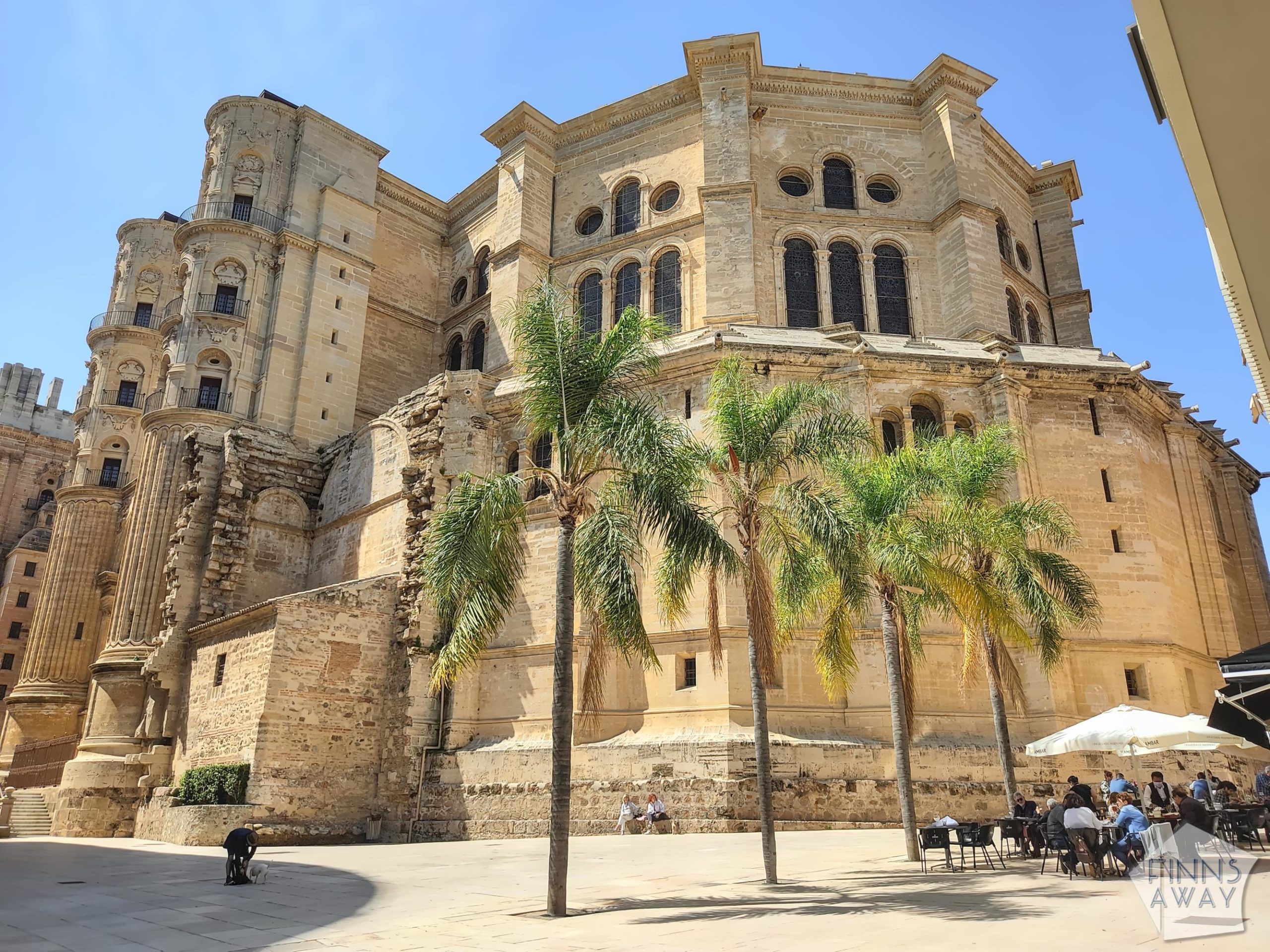
Plaza de la Merced on the edge of the old town is a must especially for all Pablo Picasso fans. Picasso’s birthplace, and the museum dedicated to his life, is located on the corner of this square, and the square also features a real-size Picasso statue. Museo Picasso Málaga, focused on Picasso’s art, can be found a couple of blocks from Plaza de la Merced, on Calle San Agustin street. There are also several other museums in Malaga’s old town, and those who are enthusiastic about shopping will find everything from branded stores to second hand boutiques. For us the most interesting thing in this short city tour was just to feel the atmosphere of the old town and to wander along the streets, before heading to explore the fortresses!
Alcazaba, Gibralfaro and Roman Theater
It’s not possible to write an article about Malaga without mentioning its fortresses, Alcazaba and Gibralfaro, that date back to Malaga’s Arab period. Gibaralfaro is a largely ruined fortress standing on Gibralfaro Hill, 130 meters above the city. It was built in its first form as early as the second half of the 7th century, and has been rebuilt or restored on several occasions throughout its history. Climbing up to Gibralfaro along the rather steeply ascending walking route to its south is well worth the effort because of the stunning scenery on the way. You can enter the fort for just a few euros (a joint ticket to Gibralfaro and Alcazaba costs € 5.50, both are free on Sundays after 2pm), and when inside, you can walk along the fortification walls and visit the small fortress museum.
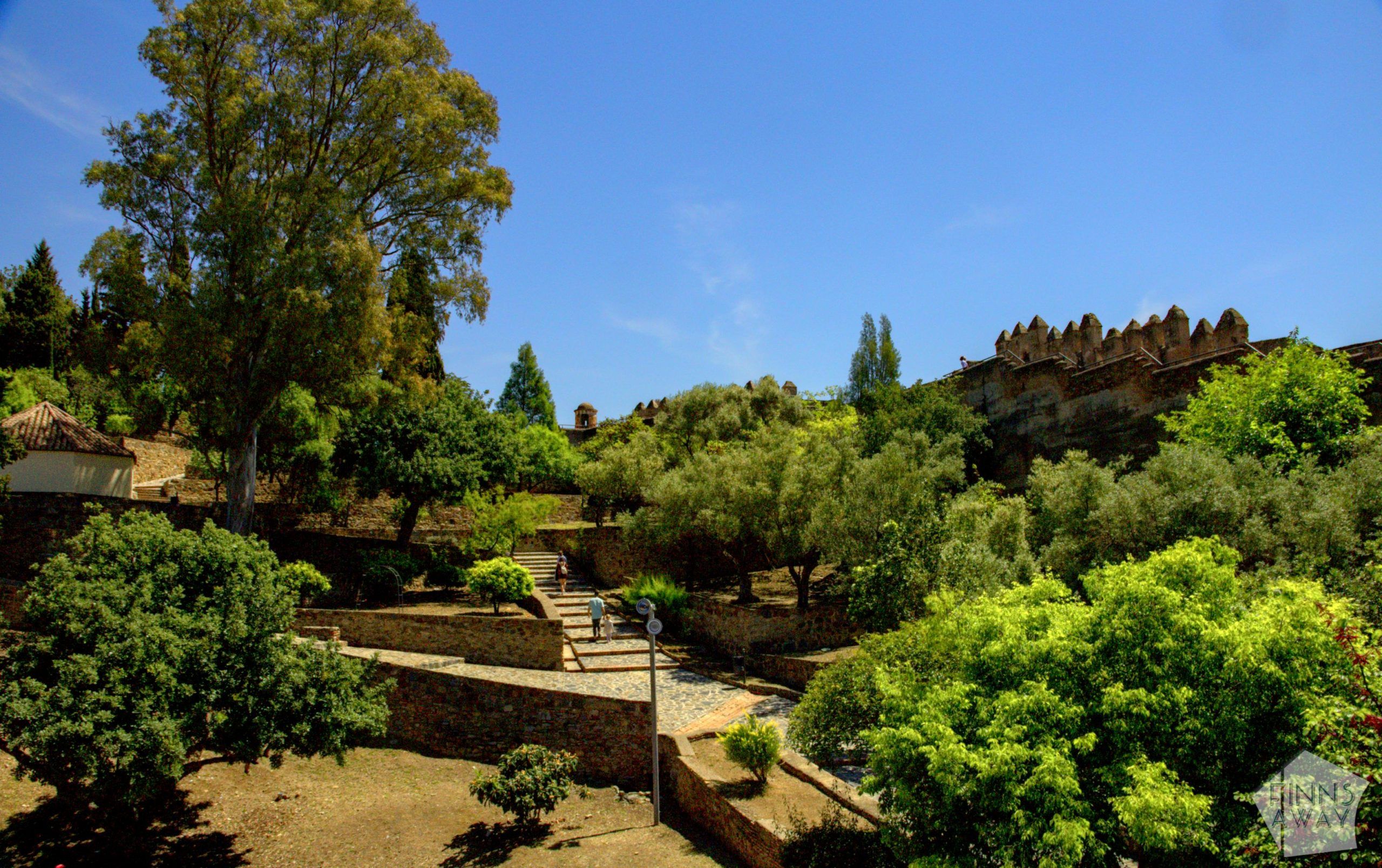
From Gibralfaro you can descend back down along the paths and roads running on the northern slopes of the hill, through a wooded area that is used by locals for both jogging and as a picnic spots. The fortress can also be reached by bus. It’s also possible stay overnight above the city, right next to Gibralfaro fortress! Just check out this Parador hotel with amazing views – it’s definitely a luxury choice, but would be just perfect for a romantic weekend in Malaga!
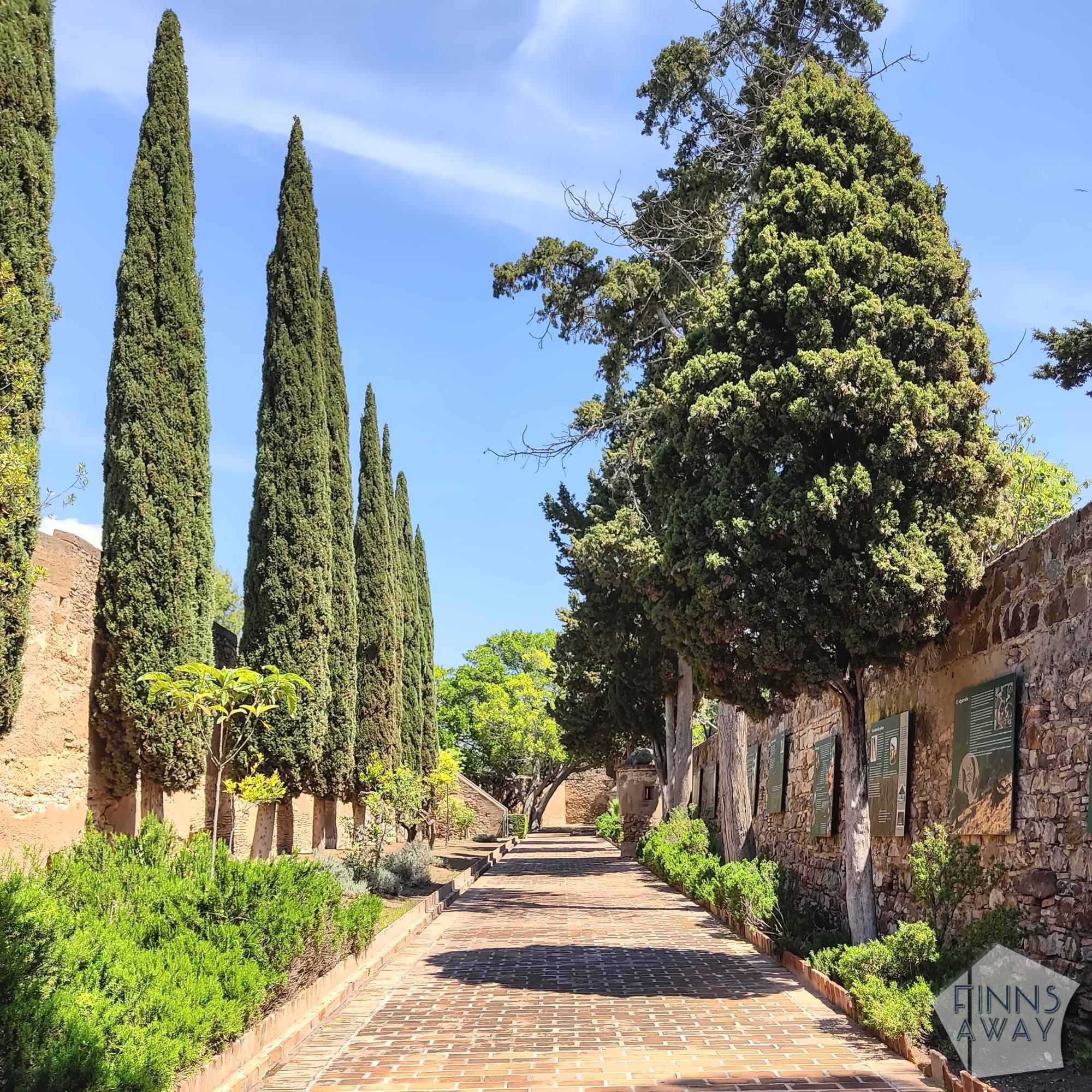
Where as Gibralfaro’s magic is mostly related to the wonderful for views and to walking along the walls, the Alcazaba of Malaga, a Medieval Moorish-style fortress right next to the Old Town, charms with Islamic architecture and small gardens.
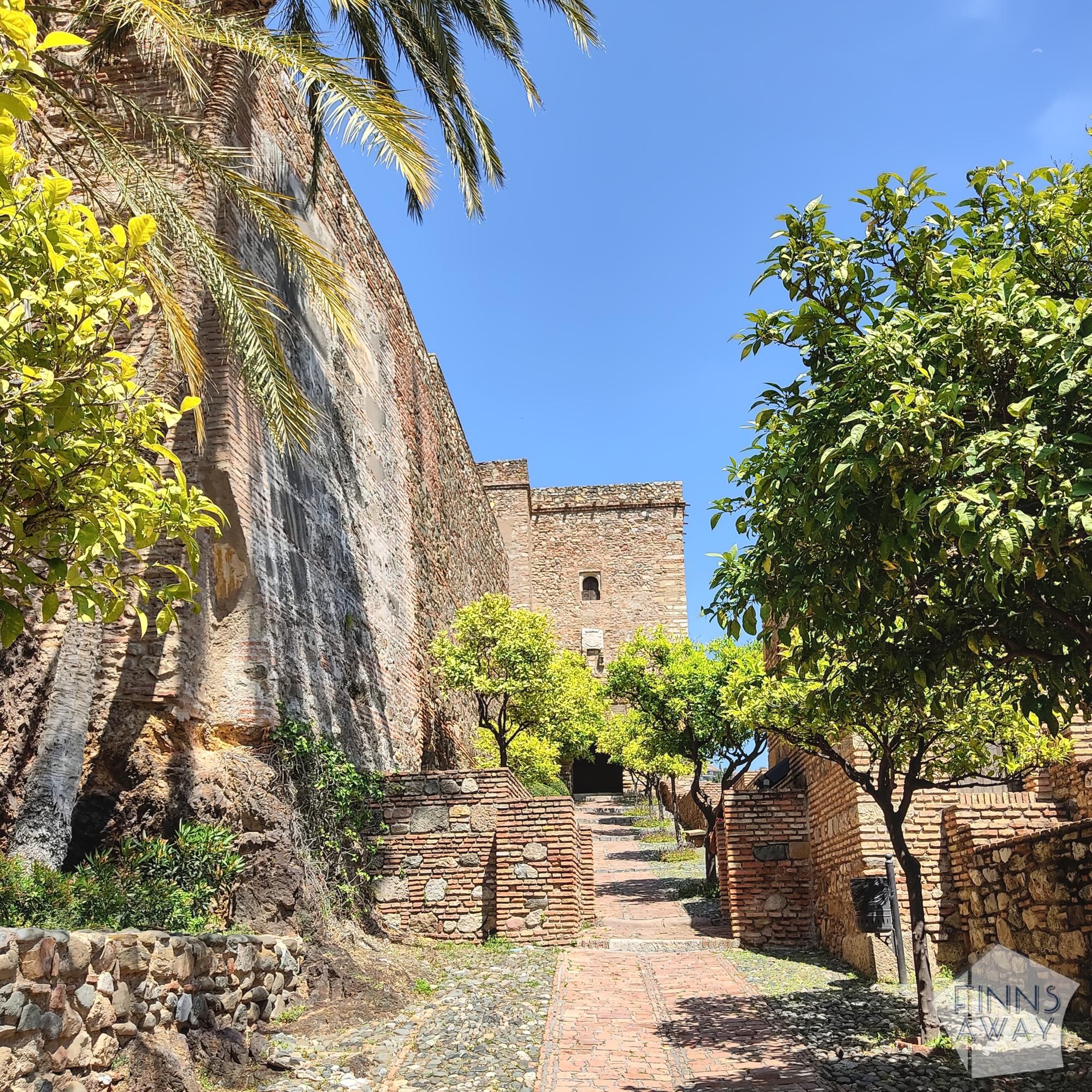
Already the walk from the ticket booth into the fortress, along paved passageways and through oriental doorways, is very beautiful, and once inside the walls, there is quite a lot to explore. Alcazaba of Malaga was built in the early 11th century by the Hammudid dynasty, and the Arabic name, Alcazaba, simply means fortress. Alcazaba was built partly using stones from the ruins of Roman era buildings of the area, and comprises two walled enclosures. The inner citadel is a beautiful palace with Andalusian patios and courtyard gardens.
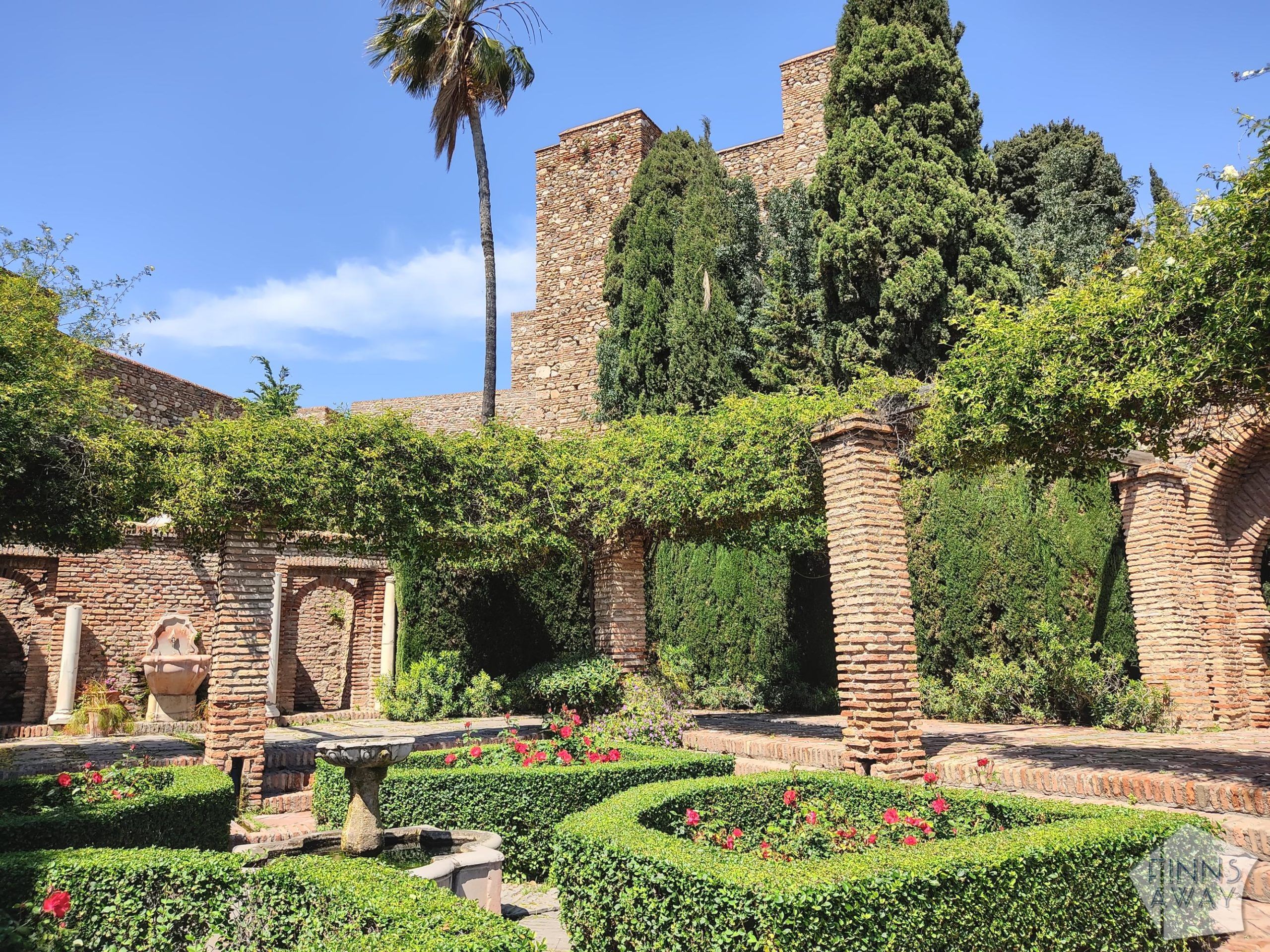
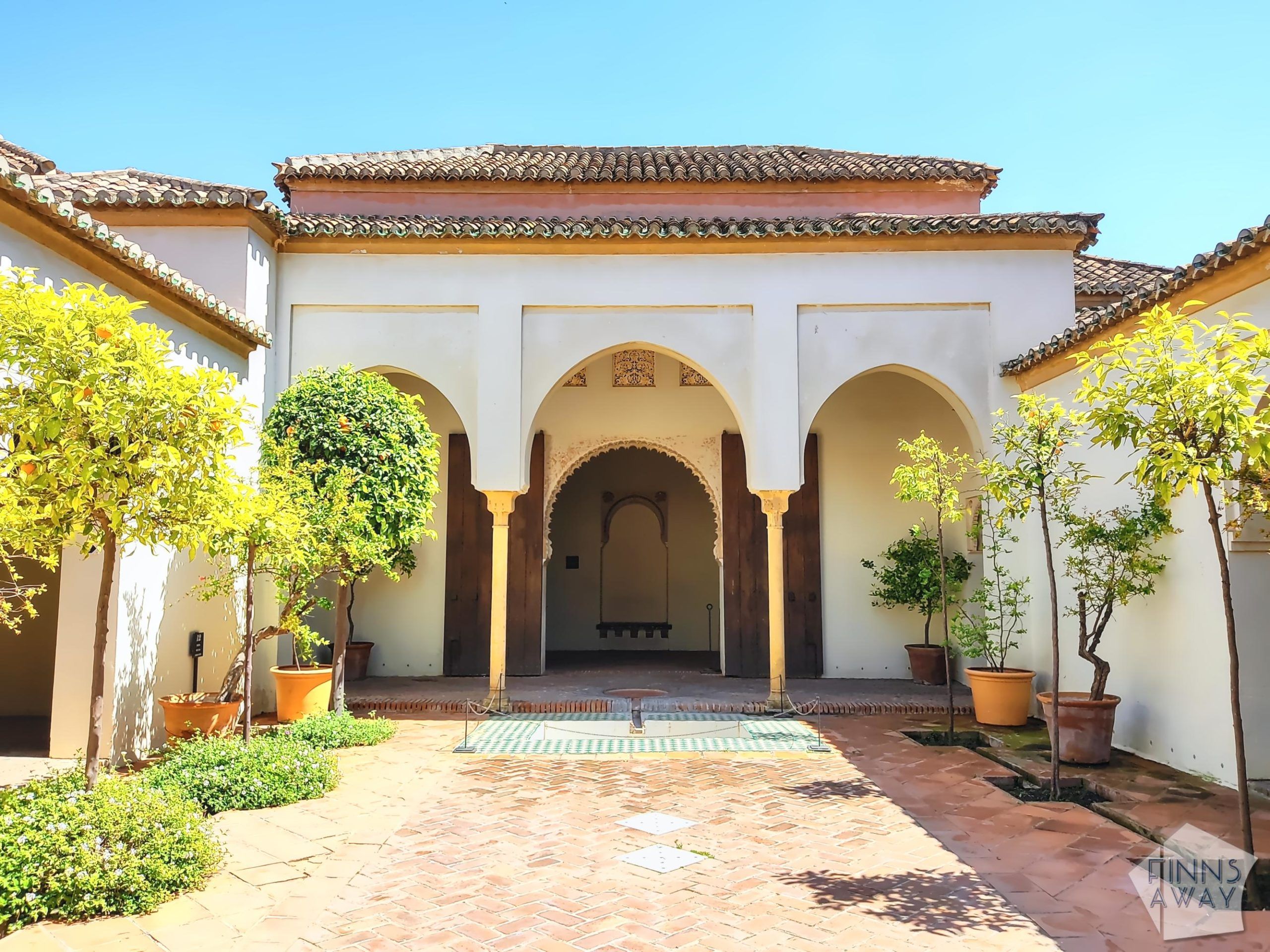
Located on the side of the Alcazaba, is the Roman Theater of Malaga, the oldest attraction of the city. The theater was built during the first decades BC, and after the Roman era it served, among other things, as a place for funeral ceremonies. Today this structure, which is well preserved for its age, sometimes hosts cultural events. The entire structure of the Roman Theater used to be buried in the ground for centuries, forgotten under the streets and buildings. It was found by accident in 1950’s, and today this oldest theater in the entire Iberian Peninsula is magnificently on display, and can be admired without admission.
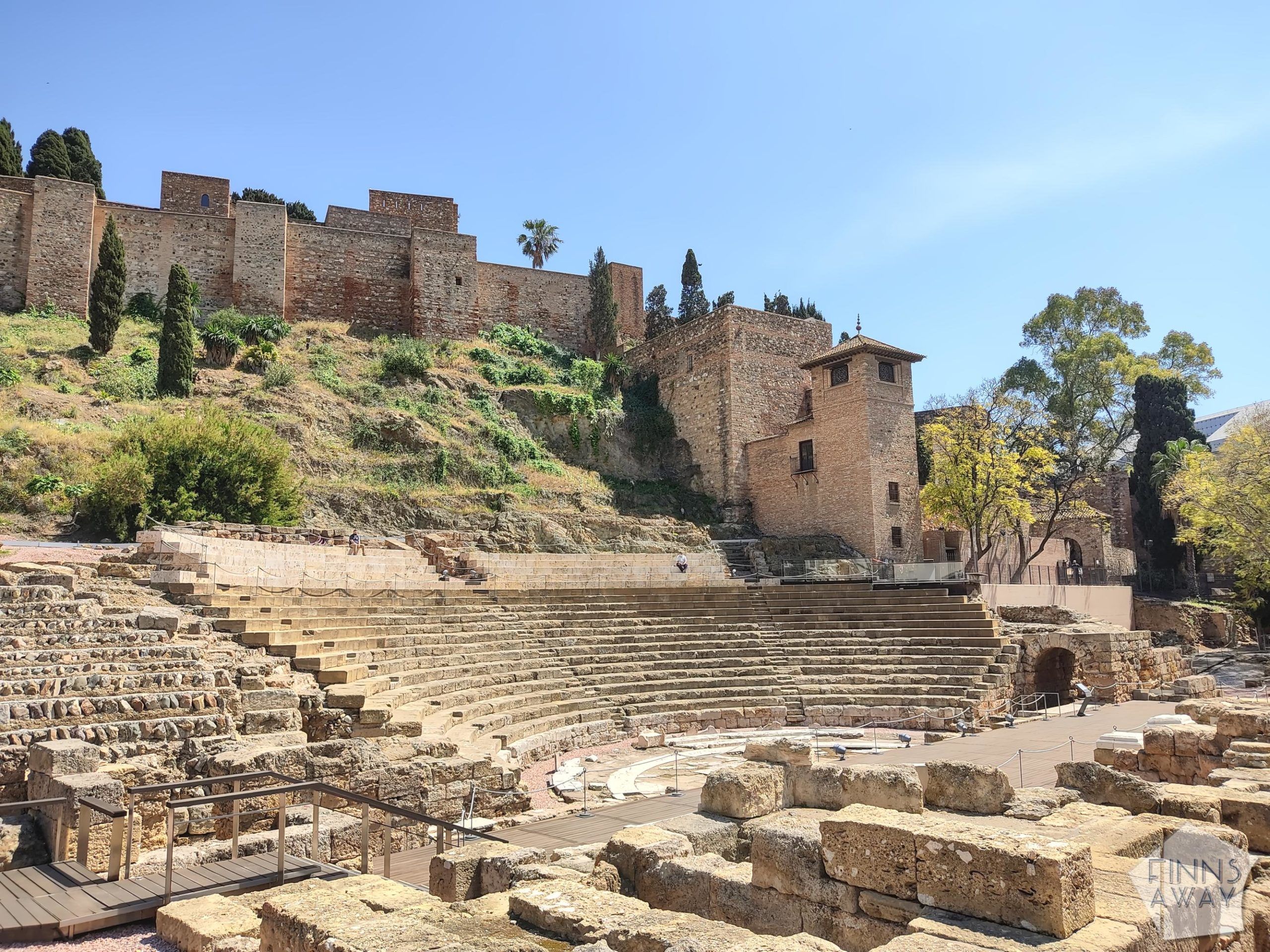
Craft beer in Malaga
During our weekend trip, we also had time to get to know the craft brewery culture of Malaga. Although Spain is clearly a wine country, there is also a fairly long tradition of brewing. Over the last couple of decades, the global craft beer boom has also reached Malaga, and today there are some artisan brewery in the city, producing quality craft beers. More about craft beer in Malaga will follow in our Craft Beer Nomads blog, but also here some brief tips for beer lovers planning a visit to Malaga. There are several craft beer oriented pubs and restaurants in the city center, with both local and international craft beers on tap and in bottles. Located right next to the Old Town, in a magnificent building, is La Botica de la Cerveza, a small craft beer pud with a nice selection of beers. Even closer to the city center is a bigger craft beer pub called Central Beers Craft Beer, as well as La Madriguera Bar, which focuses both on delicious food and on artisan beer. In the Soho district, check out at least the El Rincón Del Cervecero craft beer pub.
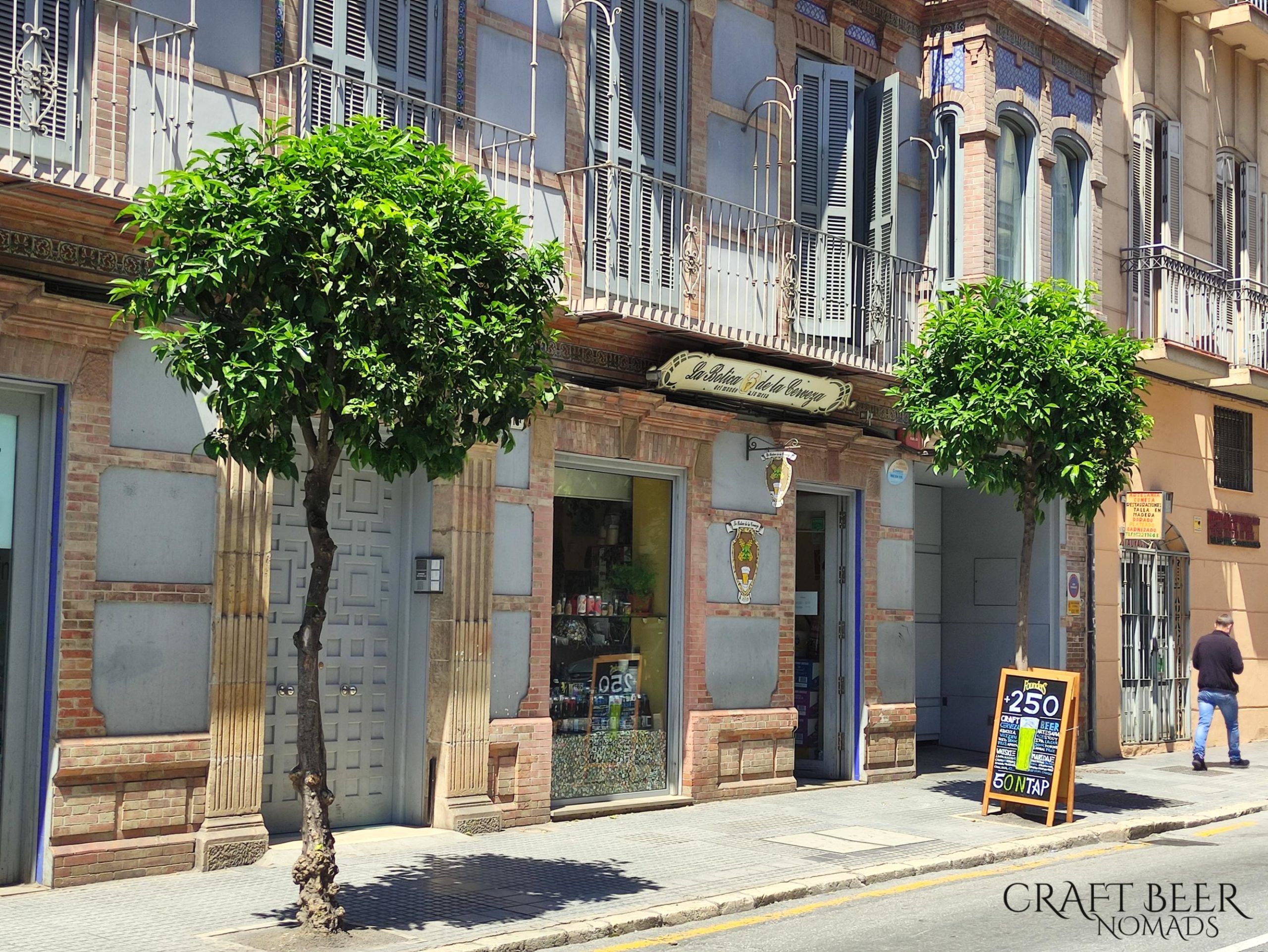
There are also actual breweries and tap rooms in Malaga area, but those who want to visit a small craft brewery must head outside the city center. We visited Bonvivant Beer’s brewery restaurant in the industrial district of Guadalhorce. The place is a bit difficult to reach (the nearest metro stop is 2.4 km) and the ambiance in the middle of car shops and gas stations may seem overwhelming to some, but the tap room is actually quite cozy! There is a sunny terrace restaurant outside the brewery, and on weekends there is either live music or a DJ, as well as a food stall where you can get delicious burgers and other pub food, accompanied by artisan brews of course.
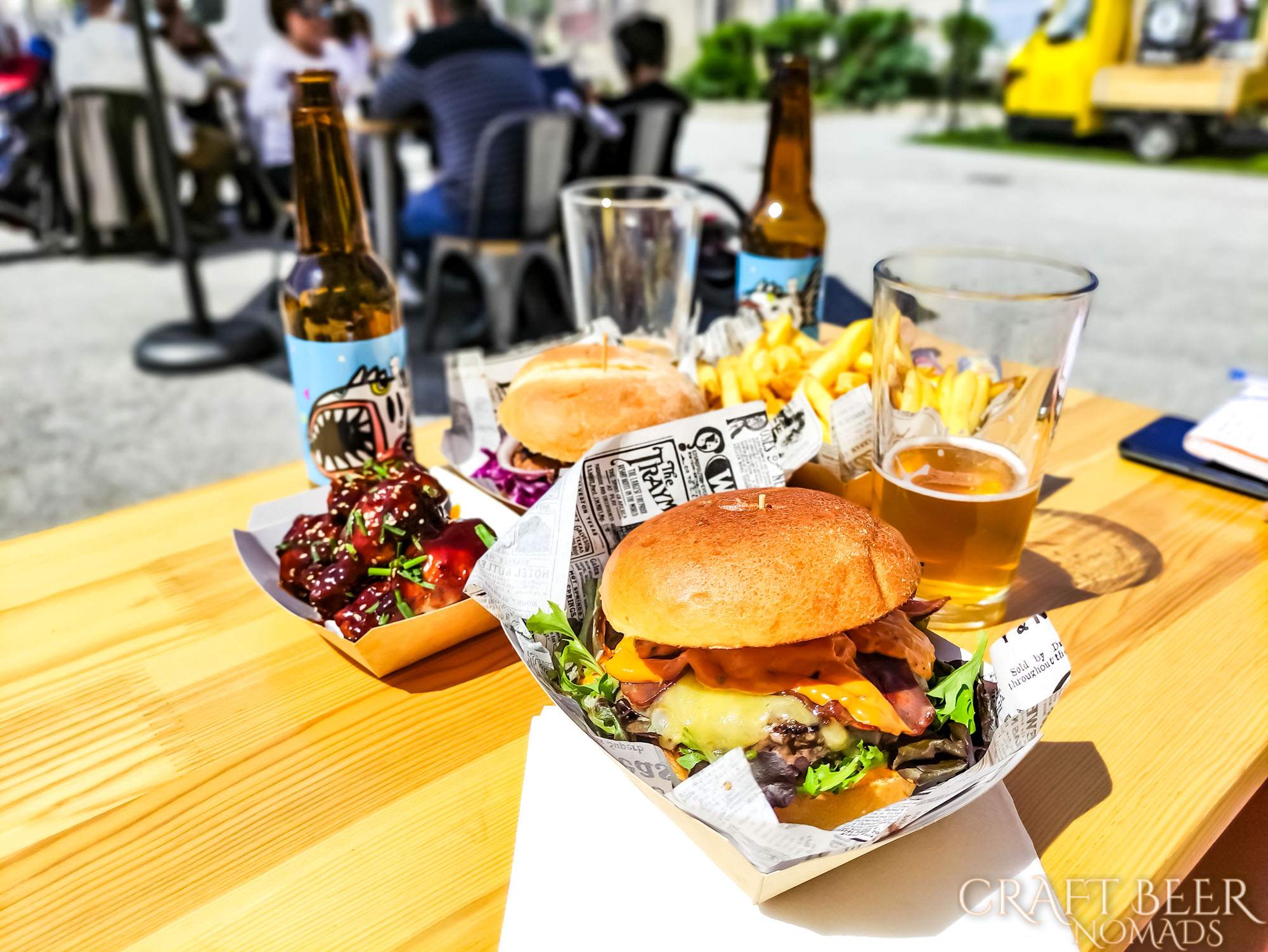
Have you visited Malaga? Share your thoughts and tips in the comments below!
